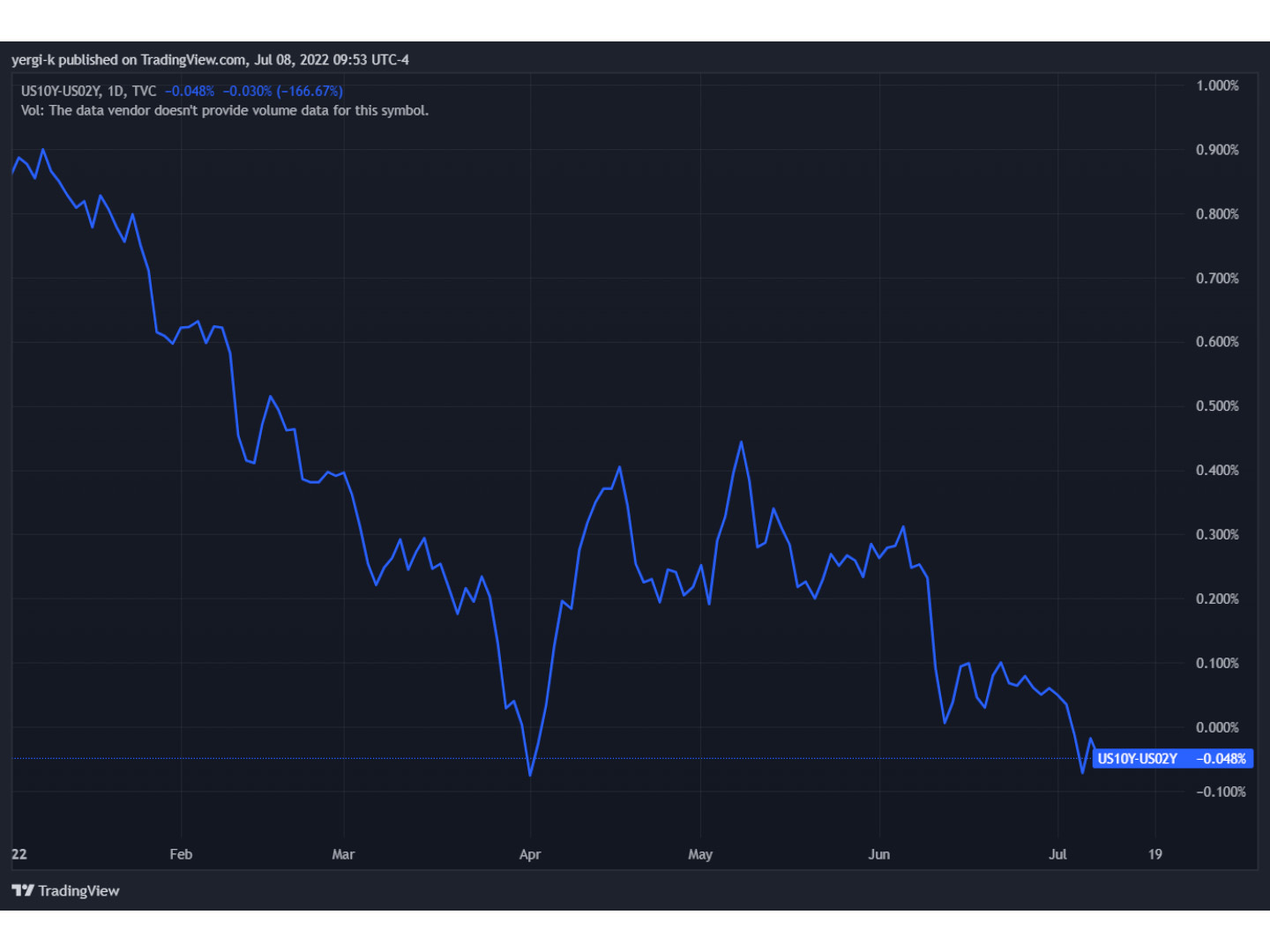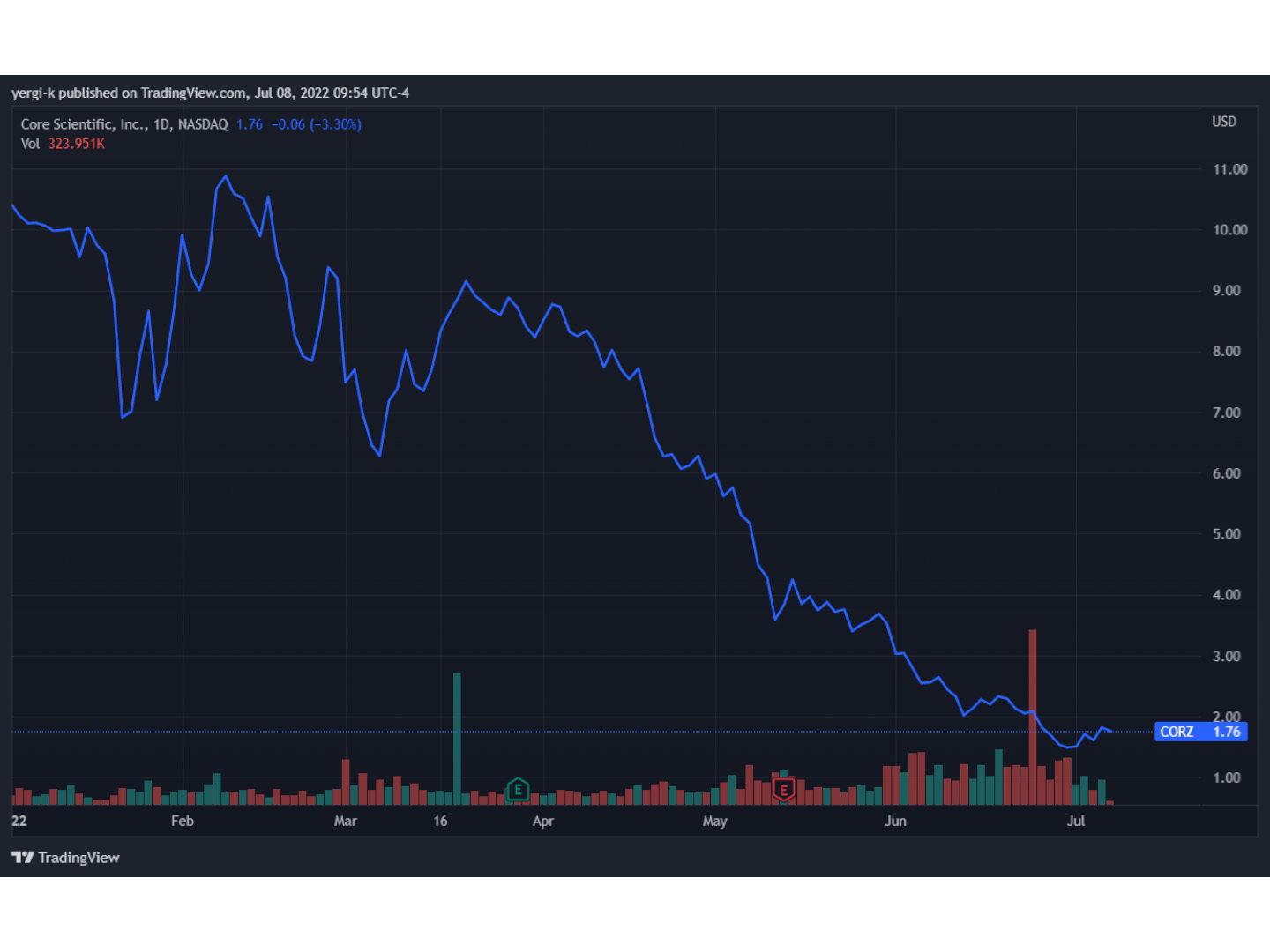Crypto
Crypto Is Trying Out Traditional Finance’s Failures in Hyperspeed, but It’s Going to Be Fine
Crypto Is Trying Out Traditional Finance’s Failures in Hyperspeed, but It’s Going to Be Fine
The last time I wrote about a stablecoin, it failed spectacularly. So when a colleague of mine suggested I write about MakerDAO’s proposal to invest in U.S. Treasurys to back its collateralized stablecoin DAI, I was reminded of the power I wield.
I’m completely joking, by the way. I don’t take myself that seriously. But while we are on the topic of spectacular failure, we should talk about spectacular failure.
Just two weeks ago, this newsletter suggested that opaque, intertwined platforms with excessive leverage were a danger to crypto investors. That was in the shadows of the hedge fund Three Arrows Capital’s insolvency, but now Celsius and Voyager (two retail-focused yield-generating platforms) have put together restructuring plans.
Which is what you do when you’re screwed. Voyager even declared Chapter 11 bankruptcy – the “good kind of bankruptcy,” for the record (if there’s such a thing) – proving that crypto is hell-bent on playing out the mistakes of traditional finance at hyperspeed. What’s more, Blockchain.com also stands to lose $270 million from lending to Three Arrows.
Oh, and there are a handful of other not-so-great crypto things happening right now which we’ll get into, but it’s all going to (somehow) be fine.
The economy is looking not so good
The yield curve inverted this week (see chart below). The yield curve inverting is often treated as a warning indicator for a recession. So that isn’t great on the surface. 10-Year Treasury Yield excess of 2-Year Treasury Yield (TradingView)
10-Year Treasury Yield excess of 2-Year Treasury Yield (TradingView)
 10-Year Treasury Yield excess of 2-Year Treasury Yield (TradingView)
10-Year Treasury Yield excess of 2-Year Treasury Yield (TradingView) OK, but what does that mean? In plain English, the U.S. federal government sells bonds, or Treasurys, to investors like you to fund all the stuff they do. Those Treasurys, in turn, pay you an interest rate or yield over a period of time. At the end of that period of time, the original amount is returned to the investor. If Treasurys sound like loans, that’s because they are.
The amount investors would expect to make on these Treasurys is higher the longer the loan is. That makes sense. Your money is locked up longer, so in exchange for that risk you get more yield. So then if you plotted the length of the loan on the x-axis against yield, you’d get a logarithmic-looking growth curve.

Normal yield curve (Julie Bang/Investopedia)
Except when the yield curve inverts – which is what happened. Now, 10-year Treasury yields are lower than 2-year Treasury yields. Theoretically, this means investors expect longer term rates to decline. Practically, this means banks – which depend on lending at rates in excess of the “risk-free rate” (typically the 10-year Treasury yield) to make money – will lend less. And this will lead to a slowdown in economic activity.
Such is life in a debt-based monetary system.
Also, a 75 basis point (bps) increase to interest rates in July is basically a foregone conclusion at this point. (For more on what that means, check out the more detailed piece I wrote two months ago). According to the Federal Open Market Committee (FOMC) June meeting minutes, almost all FOMC members were in favor of a 75 bps hike. Federal Reserve Chair Jerome Powell told us that a 75 bps hike was an “unusually large one.”
Two months in a row would seem quite usual, but that’s just me. All eyes on July 27.
The miners are struggling
We touched on how mining companies might soon capitulate by selling some of their balance sheet bitcoins to fund operations as they struggle, given 2022 price performance mentioned in last week’s newsletter. And just like that one of the largest miners, Core Scientific (CORZ), announced that it sold over 7,000 BTC in June. CORZ hasn’t performed well in 2022, so it’s unsurprising that they had to dip into the treasury a bit. CORZ stock price year to date (TradingView)
CORZ stock price year to date (TradingView)
 CORZ stock price year to date (TradingView)
CORZ stock price year to date (TradingView) All said, while miner capitulation is viewed as the beginnings of a “death spiral to zero” (since miners are supposed to be the last line of defense), that isn’t happening in reality.
Core Scientific CEO Mike Levitt assured investors the company is focused on executing its plans and the sale was just an exercise in maintaining a healthy balance sheet. To its credit, CORZ didn’t have to disclose that it sold anything given its earnings call isn’t until August.
If anything, we should applaud the transparency.
The crypto lenders are not having a good time
Lastly, leverage continues to hurt everyone. The Luna collapse led to the Three Arrows Capital insolvency, and now we are facing a crypto lender crisis. BlockFi received a structured bailout from FTX with what seems to be $215 million in earnout, Celsius halted operations and then announced some restructuring plans, and Voyager did the same-same-but-different by declaring bankruptcy.
The news is still unfolding with all these lenders. In general, this is all “not good,” but it does feel like the worst is behind us. FTX and its ever-altruistic CEO Sam Bankman-Fried is emerging as crypto’s savior as his or his firm’s name has popped up in all discussions around companies who are failing in the embers of the Three Arrows insolvency.
The actual interesting takeaway
So in general, all these things – an inverted yield curve, higher interest rates, miner capitulation and multiple crypto lender bankruptcies – are not good. What is going to be most interesting here is seeing what happens to bitcoin and crypto during these hard times. Not only is life tough in the crypto world, but macro markers are signaling a recession.
And although it was birthed out of a recession, bitcoin has never lived through one. It will, at the very least, get interesting. Thankfully (or unthankfully) things are happening quicker than I’m used to (I used to work in finance/tradfi).
Amid all of this, here’s bitcoin last week.

CoinDesk bitcoin price index (CoinDesk Indices)
So I guess it’s going to be fine? I don’t know.




